Landscape design artfully combines aesthetic appeal with environmental sustainability to craft harmonious outdoor spaces. Key elements include the strategic selection of plants, attention to soil and topography, and the integration of hardscape features like pathways and lighting. Principles such as balance, unity, and scale guide the design to guarantee both functionality and visual attractiveness. Sustainable practices , such as using native plants and implementing effective water management systems like drip irrigation, play a vital role. Additionally, designs often incorporate wildlife-friendly practices to support local ecosystems. Understanding these components will greatly enhance your ability to create resonant and sustainable landscapes. Discover how these principles are applied to transform spaces.
Understanding Landscape Aesthetics
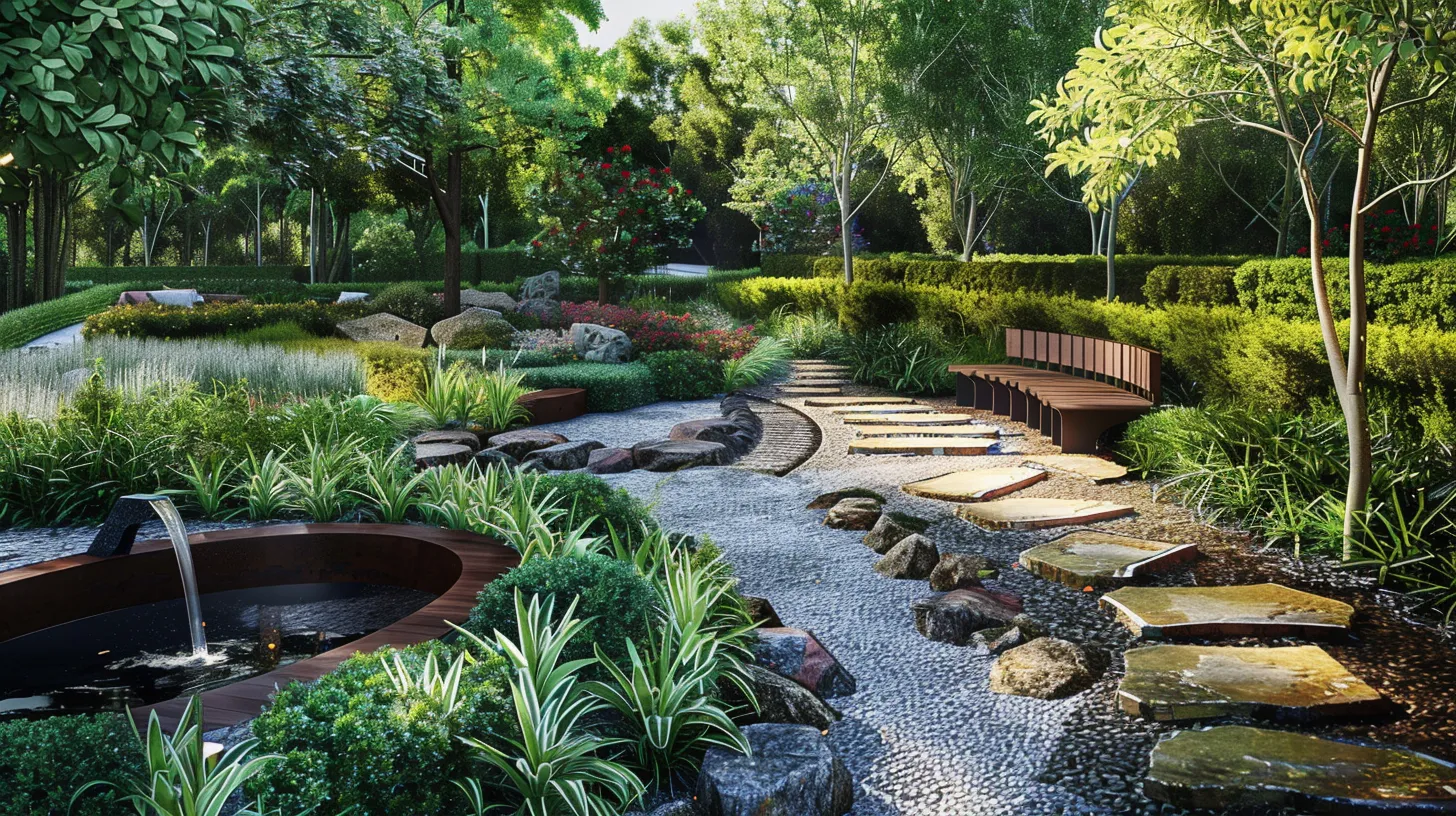
Landscape aesthetics are essential in shaping the visual appeal and beauty of outdoor spaces by strategically arranging plants, hardscape features , and lighting . This branch of landscape design focuses on the meticulous placement and selection of various elements to create an environment that is not only visually engaging but also harmonious. The goal is to craft outdoor settings that offer captivating visual interest through a balance of colors, forms, and textures, while integrating practical lighting that enhances both the functionality and beauty of the space.
Effective lighting is particularly important as it highlights the landscape's features, improves safety, and extends the usability of outdoor spaces into the evening hours . It plays a dual role by both illuminating pathways for security and accentuating the aesthetic qualities of the garden or yard after dark.
Elements of Design Theory
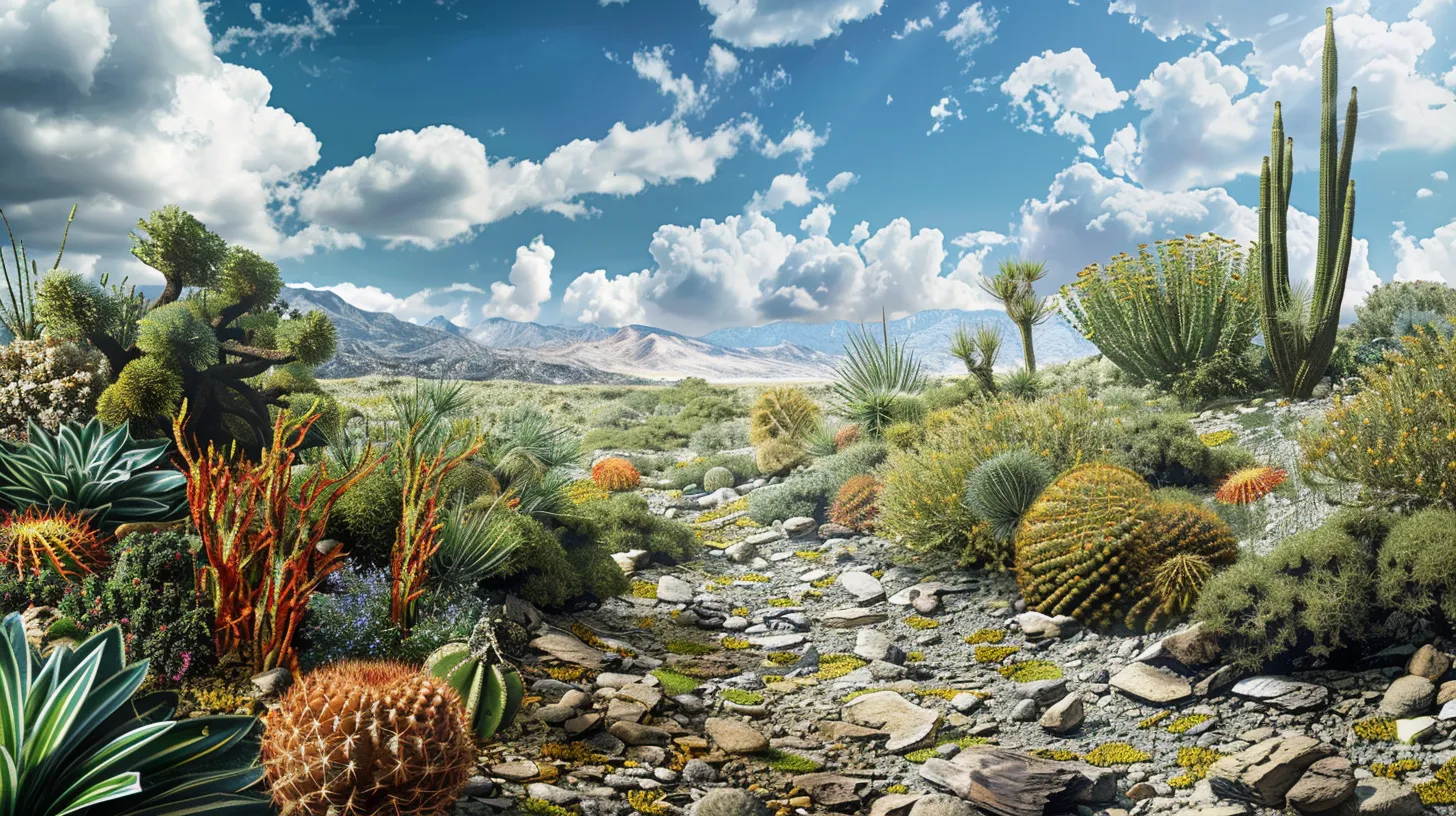
Building on the foundation of landscape aesthetics , design theory introduces specific principles such as unity, balance, scale , and emphasis to further enhance the visual impact of outdoor spaces. These principles are vital in creating a harmonious and visually appealing environment. Unity in landscape design ensures all elements work together cohesively, while balance is achieved through the symmetrical or asymmetrical arrangement of these elements, contributing to a sense of stability and proportion.
Scale refers to the size of elements in relation to each other and to the space as a whole, ensuring that nothing feels out of place. Emphasis, on the other hand, guides the viewer's eye to key focal points within the landscape, which are often highlighted through contrasting colors, unique forms, or strategic positioning.
The elements of design such as form, texture, color, and line play significant roles in implementing these principles effectively. For example, the repetition of these elements can create rhythm, which adds to the overall visual interest and guides the viewer's journey through the space. By applying these design theory techniques meticulously, landscape designers craft outdoor spaces that are not only aesthetically pleasing but also resonate deeply with the individuals who experience them.
Climate Considerations

Taking into account the local climate is essential in the planning and development of effective landscape designs. Climate considerations help define the selection of plants and materials that will thrive under specific weather conditions. By analyzing factors such as temperature, precipitation, and sunlight exposure, landscape designers can create outdoor spaces that not only complement the natural environment but are also sustainable and resilient.
Understanding microclimates within a site is vital. This knowledge allows for the customization of design to accommodate variations in temperature, wind patterns, and moisture levels, ensuring that different areas of the landscape can support diverse plant life and usage. Additionally, climate resilience is enhanced by incorporating drought-tolerant plants , rain gardens , and permeable paving . These features help manage water usage efficiently and address changes in weather patterns.
Employing climate-responsive design strategies is key to minimizing environmental impact while maximizing the functionality and aesthetic appeal of the space. Such strategies include choosing materials and plants that reduce water usage, prevent erosion, and maintain comfortable outdoor environments throughout the year. In sum, thoughtful consideration of climate factors is integral to crafting sustainable outdoor spaces that are harmoniously aligned with their local environments.
Soil and Topography Analysis
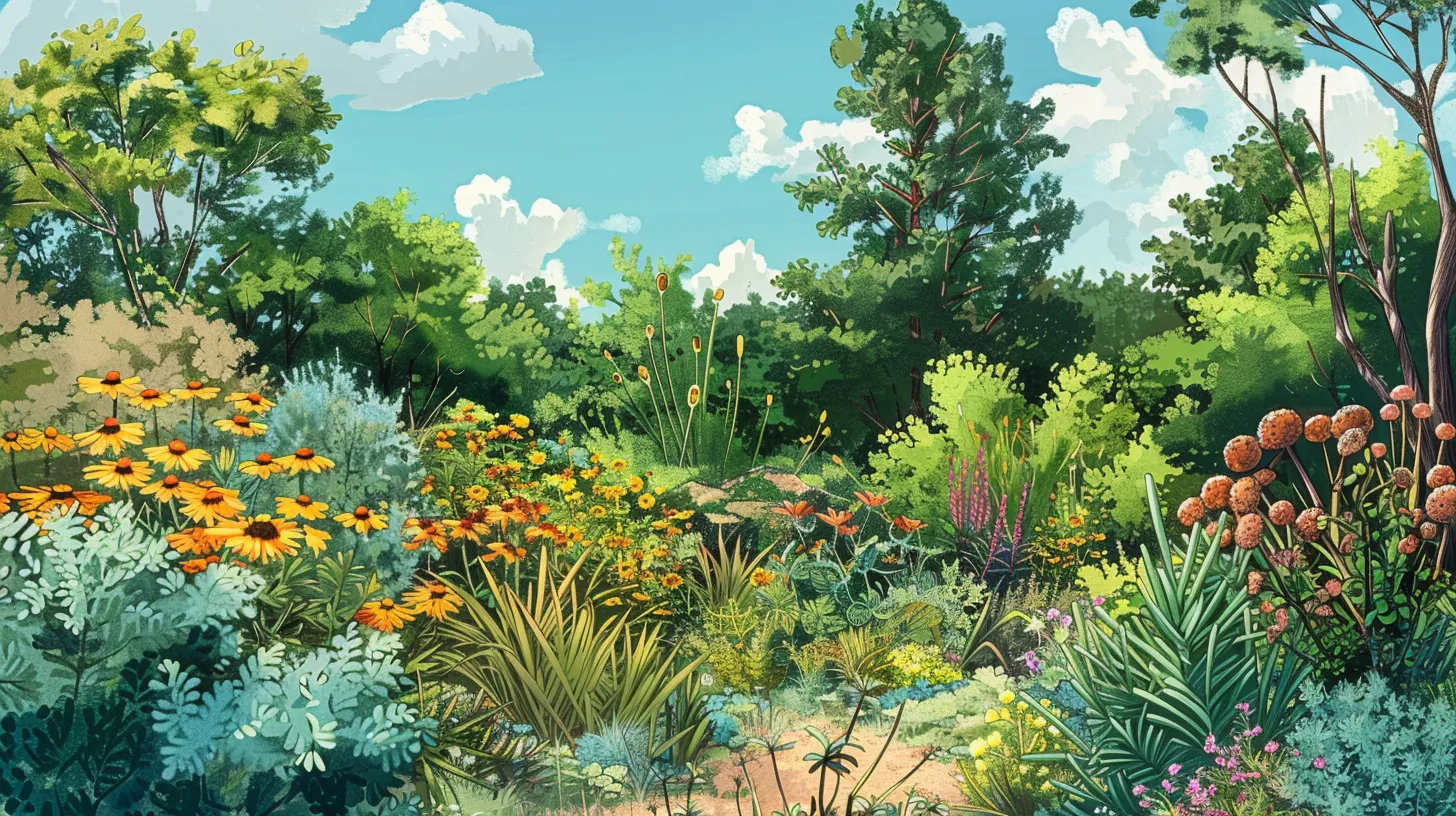
Soil and topography analysis is essential in determining the viability and strategic planning of landscape projects, addressing both the aesthetic and functional aspects of outdoor space design. Soil analysis evaluates pH levels , nutrient content, and soil structure , which are critical for determining plant suitability and ensuring ideal growth conditions. The texture of the soil , whether sandy, loamy, or clayey, affects water retention , aeration , and root penetration, which are crucial for plant health.
Furthermore, topography analysis is important for the effective planning of landscape features. By evaluating slopes, elevations, and contours through topography assessment , designers can optimize water flow and prevent erosion, integrating these elements seamlessly with the natural terrain . This holistic approach not only enhances the visual appeal but also guarantees the functionality of the outdoor space.
These assessments are indispensable in landscape design, as they provide a foundation for creating sustainable, thriving outdoor environments that are well-adapted to their specific site conditions. By carefully analyzing both soil and topography, landscape designers can craft spaces that are both beautiful and resilient, ensuring long-term sustainability of the landscape.
Plant Selection Strategies
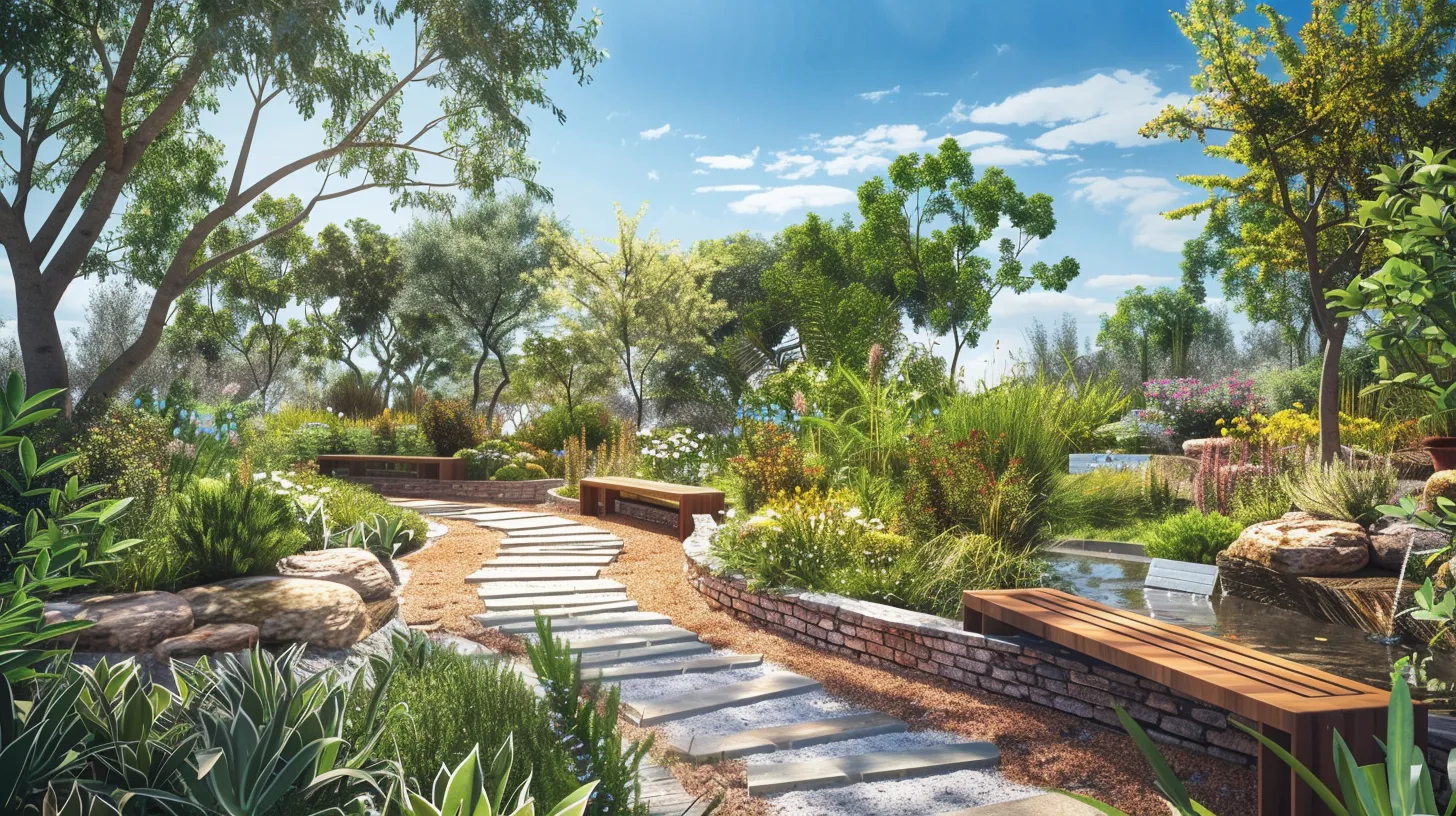
Following the analysis of soil and topography, the next step in landscape design involves selecting appropriate plants that are best suited to these conditions. Plant selection is pivotal in guaranteeing the sustainability and aesthetic value of the outdoor space. By considering the local climate and specific soil conditions, designers can choose plants that are not only visually appealing but also ecologically compatible . This approach greatly enhances the likelihood of plant survival and reduces maintenance needs.
Incorporating native plants is a strategic choice in landscape design due to their adaptability to local environments. These plants generally require less water and are more resistant to local pests and diseases, contributing to a more sustainable garden . Additionally, native species support local wildlife, creating a biodiverse habitat.
Diversity in plant selection is another critical aspect. By using a mix of evergreen and deciduous plants, designers can ensure year-round interest in the garden. Varieties in color, texture, and height add layers of visual interest and help in creating a balanced and dynamic landscape. This strategic diversity not only enhances the aesthetic appeal but also promotes a healthy, sustainable ecosystem within the garden.
Water Management Techniques
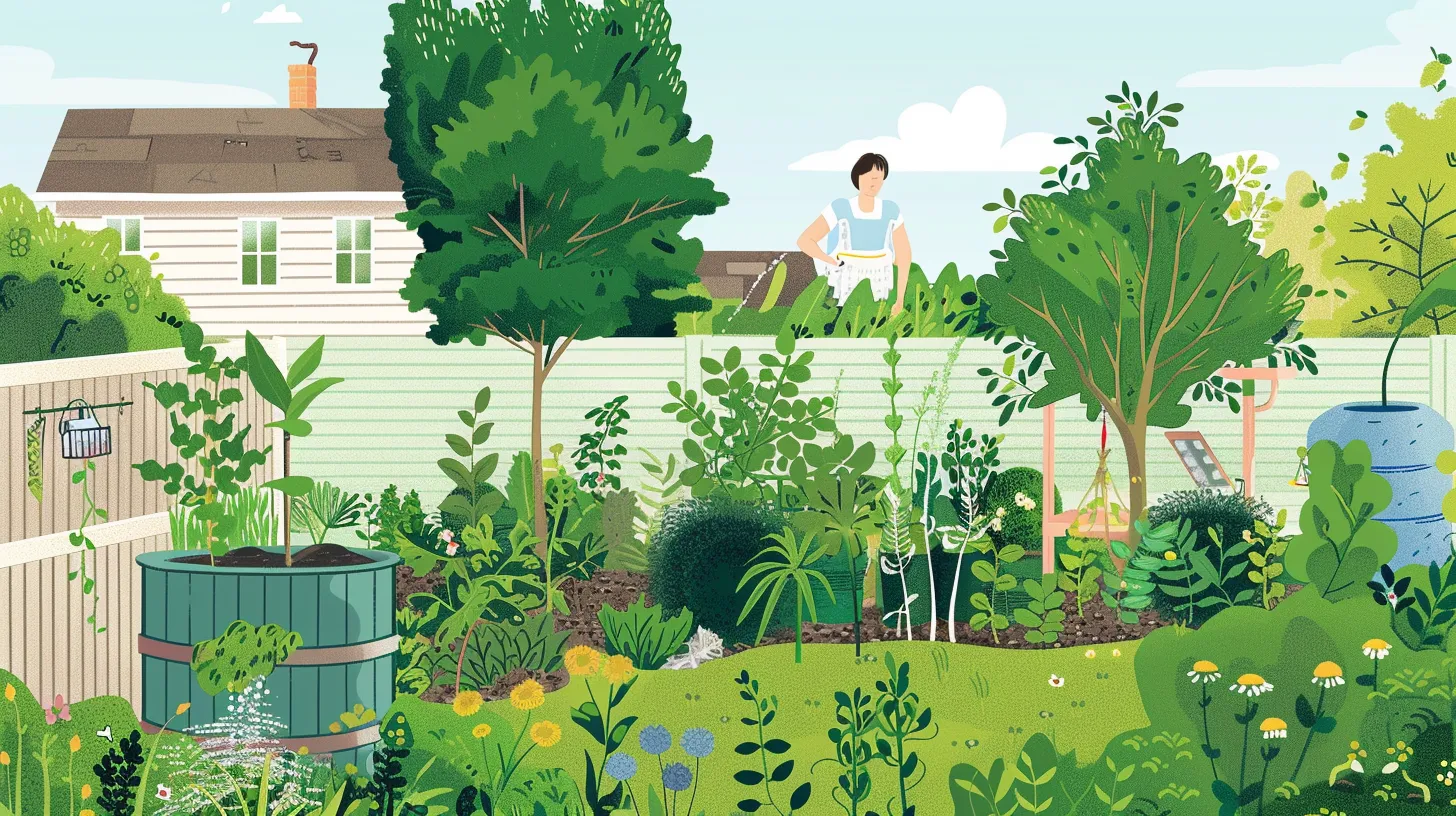
Effective water management techniques are important in landscape design to guarantee sustainable water usage and enhance the health of the garden. Integrating methods like drip irrigation systems and rainwater harvesting can greatly improve water efficiency. These systems not only reduce water wastage but also make sure that water is delivered directly to the roots of the plants where it's most needed.
The use of permeable surfaces such as gravel or permeable pavers is another essential strategy. These materials allow rainwater to soak into the ground, reducing runoff and replenishing underground water reserves. Additionally, implementing rain gardens and swales can further assist in capturing excess rainwater, which not only prevents erosion but also enhances the quality of water returning to the ecosystem by filtering out pollutants.
Incorporating native plants that require less water is a wise choice for promoting water conservation . By selecting plants adapted to the local climate and grouping species with similar water needs, gardeners can minimize unnecessary water use and maintain an efficient irrigation regime. Moreover, careful grading and slope design are important in controlling the direction and flow of water in the landscape, ensuring that water drains effectively and does not accumulate in undesired areas, preventing potential waterlogging and related issues .
Incorporating Man-Made Structures
After discussing water management techniques, the focus now shifts to how man-made structures like pergolas , gazebos , and outdoor kitchens can enhance landscape design. Man-made structures not only boost the functionality of outdoor spaces but also greatly increase their aesthetic appeal. Pergolas and gazebos create inviting, shaded areas perfect for relaxation or social gatherings, while outdoor kitchens cater to the practical needs of cooking and entertaining outdoors.
These structures play an essential role in defining outdoor 'rooms' , carving out dedicated spaces for various activities within a garden or yard. This segmentation helps in organizing the space better and makes it more usable for homeowners. Additionally, elements such as retaining walls and fences add layers of privacy and security , contributing to a sense of seclusion and safety in the outdoor environment.
The strategic placement and thoughtful design of these man-made structures are vital. They must harmonize with the natural landscape , maintaining a balance that respects the existing flora and terrain. By doing so, they seamlessly integrate with the overall design concept, ensuring that the man-made additions enhance rather than overpower the natural beauty of the outdoor setting.
Wildlife Consideration Practices
Integrating wildlife consideration practices into landscape design not only enhances local biodiversity but also fosters a vibrant and sustainable outdoor environment. By incorporating elements such as bird feeders , nesting boxes, and butterfly gardens , designers can create vital habitat for wildlife. These features attract and support various species, contributing greatly to biodiversity conservation.
Utilizing native plants in these designs ensures that the outdoor spaces provide not only food but also appropriate shelter and nesting sites. This approach aligns with wildlife-friendly practices that promote the survival of beneficial species, thereby enhancing biological diversity. Additionally, the inclusion of native vegetation supports ecological balance by maintaining and improving soil health and water quality.
Strategically creating wildlife corridors within the landscape further exemplifies a commitment to sustainability. These corridors facilitate essential wildlife movement between habitats, preventing genetic isolation . Implementing such connectivity measures is pivotal in sustaining diverse animal populations and ensuring robust ecosystems.
Sustainable Materials Usage
Building on the theme of environmental stewardship, the use of sustainable materials is another essential aspect of landscape design. Sustainable materials, including recycled wood , metal, and plastic, play a pivotal role in constructing eco-friendly outdoor elements like decks, fences, and furniture. These choices not only mitigate the need for new raw materials but also prevent landfill overflow .
Permeable paving, utilizing materials such as gravel or specially designed concrete, addresses vital ecological concerns by managing stormwater runoff and minimizing soil erosion. This technique enhances groundwater recharge and reduces the burden on urban drainage systems. Similarly, the incorporation of reclaimed materials like old bricks, stones, or salvaged wood lends a unique aesthetic to landscapes while diminishing the environmental toll associated with extracting new resources.
Further emphasizing sustainability, the strategic use of organic materials such as mulch, compost, and natural fertilizers supports robust soil health and promotes vigorous plant growth. These organic options enrich the soil and foster a healthier ecosystem within the garden.
Opting for locally sourced materials not only cuts down carbon emissions linked to transportation but also boosts the local economy . Such practices exemplify a commitment to reducing the carbon footprint of landscape projects, aligning with broader global sustainability goals .
Long-Term Maintenance Planning
Effective long-term maintenance planning is crucial for sustaining the health and aesthetics of any landscaped area. By accounting for plant growth , seasonal changes , and weather patterns , such planning guarantees the sustainability of outdoor spaces. This involves scheduling essential tasks like pruning, fertilizing, and irrigation maintenance, alongside pest control efforts, which collectively maintain a thriving landscape.
Incorporating native plants and species that require minimal upkeep into the design can greatly streamline maintenance processes. These plants naturally adapt to local conditions, reducing the need for intensive care and frequent interventions. This approach not only preserves the natural beauty and ecological balance of the area but also enhances the landscape's resilience to environmental stresses.
Regular monitoring is a critical aspect of long-term maintenance planning. It involves periodic assessments such as soil testing , checking drainage systems, and evaluating plant health. This proactive approach helps in timely identifying and addressing potential issues like soil erosion or plant diseases , thereby preventing them from escalating. By continuously adapting maintenance practices to meet the evolving needs of the landscape, long-term maintenance planning supports the enduring success and visual appeal of outdoor designs.










